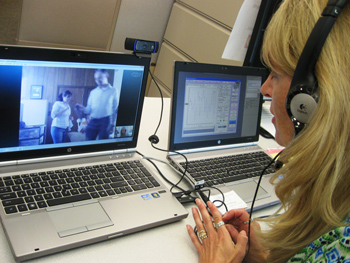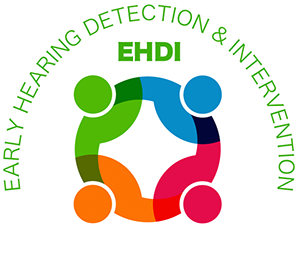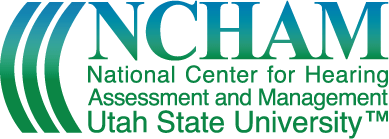Last Modified: 06/21/2023
VII. Preparing the Family

Tele-audiology relies heavily on the staff and technician at the spoke sites to assist with supporting scheduling, communication with families, and assisting with the actual audiologic procedures.
Prior to the diagnostic evaluation or service, the designated spoke site technician must ensure that the family knows what to expect and that support is provided to ensure their attendance. It is generally helpful to have the technician (or other staff member) from the spoke site, communicate and document the following:
Obtain Informed Consent
Informed consent may be collected by the staff at the spoke site prior to beginning the live tele-audiology session. This allows the diagnosing audiologist to simply confirm receipt of informed consent at the beginning the evaluation or service. The American Telemedicine Association states in their “Practice Guidelines for Video-Based Online Mental Health Services” that:
Local, regional and national laws regarding verbal or written consent shall be followed. In addition, the informed consent process should include information specific to the nature of videoconferencing as described below. The information shall be provided in language that can be easily understood by the patient. This is particularly important when discussing technical issues like encryption or the potential for technical failure. Key topics that shall be reviewed at the time of obtaining informed consent include:
- Confidentiality and the limits to confidentiality in electronic communication
- Agreed upon emergency plan, particularly for patients in settings without clinical staff immediately available
- Process by which patient information will be documented and stored
- The potential for technical failure, procedures for coordination of care with other professionals
- A protocol for contact between sessions
- Conditions under which a referral may be made for follow up care
The Consent to Participate in Telemedicine document provides a checklist template that can be used to obtain informed consent before providing tele-audiology services, as well as inform your patient about what to expect during their remote appointment.
Verify Everyone’s Contact Information
Telephone and email contact information for the audiologist, the technician, and the patient’s family should be obtained and verified to ensure follow up. Verifying accurate contact information prior to the appointment will be helpful should the tele-audiology connection be lost and the participants need to be reached.
Confirm the Location of the Patient Site and the Specialist Site
It is important to confirm the location where the family is to go and the location of the audiologist. This is particularly important for tele-audiology programs that involve multiple remote sites. The location(s) where the patient will be receiving tele-audiology services shall be confirmed, documented, and provided to the child’s caregiver. This information is necessary for reporting, reimbursement, and adherence to licensure requirements. It also serves to determine if there is a need for transportation support to the spoke site. Keep in mind, several tele-audiology services can now be provided via smartphones thus allowing the patient and family to stay within their home saving them time and money.
These samples of a Parent Scheduling Letter [PDF] provide examples of how to share with families the appointment procedure, as well as their appointment time and location. These letters are helpful to parents and caregivers as they briefly describe what to expect during the tele-audiology appointment and they outline how they should prepare for the hearing evaluation or service.
Provide Family Education Materials about the Diagnostic Evaluation Process
As with in-person audiologic evaluations, it is important to provide parents/caregivers with information about the evaluation process or service and how they can ensure that their infant is in an appropriate state for testing. These procedures are articulated in other resources, including EHDI PALS.
Examples
- Colorado: Children’s Hospital at the University of Colorado created a video to explain the tele-audiology process to families in Guam. This video may be used as an example of how a facility could create informational videos for their own tele-audiology services to provide to parents and caregivers.
- California: Anne Simon created a presentation for procedures to support parent communication and education about T-A [PDF]
References
- Drieth, S. & Schicke, E. (n.d.) Infant hearing tests over the internet [Video]. Children’s Hospital Colorado. https://infanthearing.org/flashplayer/index.htm?file=https://www.infanthearing.org/flashvideos/teleaudiology/guam-video.mp4
- Simon, A. (n.d.). Parent communication/ education with tele-audiology [PowerPoint slides]. UC Davis Children’s Hospital. https://infanthearing.org/flashplayer/index.htm?file=https://www.infanthearing.org/flashvideos/teleaudiology/guam-video.mp4


